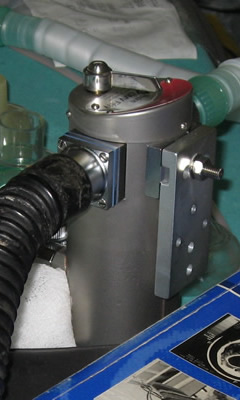The Effect of Vaporisation
Vaporization causes a liquid to cool (which is why sweating cools the body). Vaporization of the volatile agent removes heat from both the agent and vaporiser.
The cooled liquid does not evaporate so readily and thus vaporization is reduced and less volatile agent is delivered to the patient.
Question: How do vaporizers compensate for the loss of heat?

Vaporization causes a liquid to cool (which is why sweating cools the body). Vaporization of the volatile agent removes heat from both the agent and vaporiser.
The cooled liquid does not evaporate so readily and thus vaporization is reduced and less volatile agent is delivered to the patient.
Question: How do vaporizers compensate for the loss of heat?
Answer: Vaporizers compensate for the loss of heat in the following ways:
Thermo compensation (TEC)
Flow of air in vaporizers is split into two:
- Flow through the vaporizing chamber
- Flow through the bypass chamber
As the temperature falls, the ratio of air going to the vaporizing chamber increases. The greater flow through the vaporizer chamber compensates for the reduced rate of vaporization.
Thermal Buffer
- EMO. The EMO has a large mass of metal and a water bath to act as a 'heat sink' to limit the change in temperature
- OMV. The OMV has a small amount of glycol (anti-freeze) in the base to provide some thermal buffering. The output is reduced as the temperature falls
New draw-over vaporizers
The Diamedica and UAM vaporizers have a large mass of metal which acts as a heat sink.
